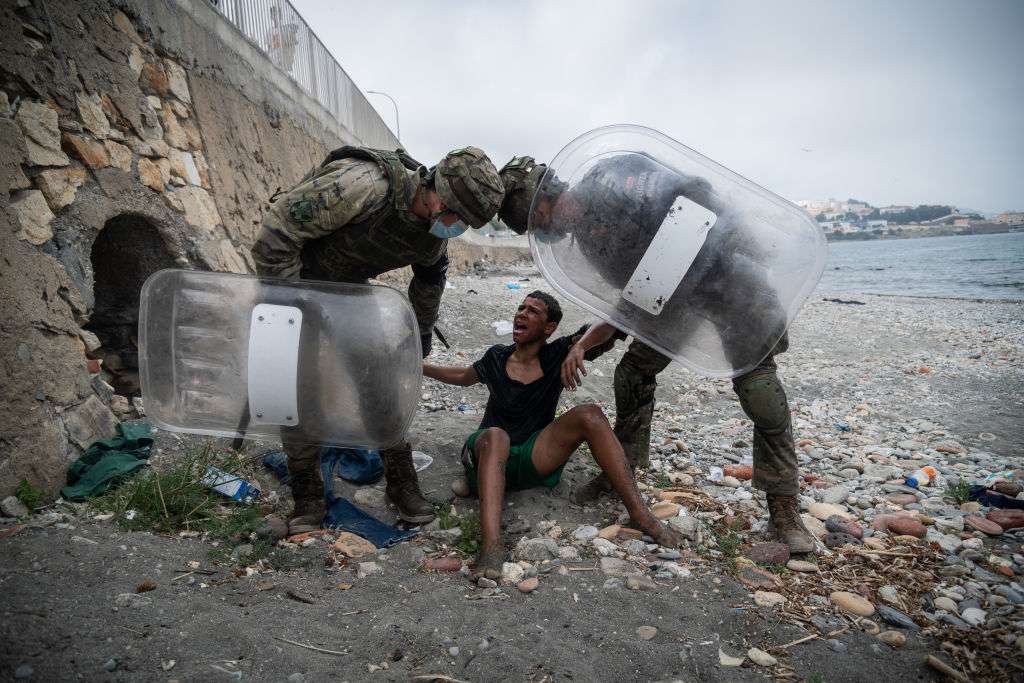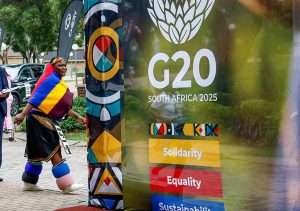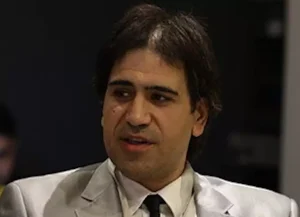Unaccompanied children and the crisis at Morocco’s borders

CEUTA, SPAIN - MAY 19: A migrant reacts while Spanish soldiers detain him on the Tarajal beach after being intercepted when he was swimming across the border between Morocco and Spain on May 19, 2021 in Ceuta, Spain. After a diplomatic conflict between Spain and Morocco, thousands of migrants who have taken advantage of the little Moroccan police activity on the border to cross it mainly by swimming, which has caused a migration crisis with the entry of more than 8000 migrants from the African country. (Photo by Joan Amengual/VIEWpress)
A surge in unaccompanied child migrants in Morocco might underscore an urgent governance challenge in the Kingdom, which has increasingly tightened its border controls to stem the flow of refugees heading toward Europe.
The International Organisation for Migration’s (IOM) latest bulletin, published on July 10 that the Kingdom is fast becoming a transit hub for child migrants. The 2024 report counted an alarming 1,024 unaccompanied minors in just Nador, Casablanca, and Marrakech, as reported by Moroccan government-friendly Hespress.
Roughly one-third were Moroccan, with the rest hailing from 26 other countries, primarily in West Africa.
Morocco has long been a key transit point for migrants and refugees seeking asylum in Europe, through the Mediterranean, the Atlantic, or by jumping the fence surrounding the Spanish enclaves of Ceuta and Melilla. Under pressure from Europe, Morocco has been strengthening its borders to curtail the influx of migrants.
The IOM, in coordination with local organizations, has responded with increased support in several services, including legal protection, educational programs, language classes, psychosocial care, and access to necessities. The number of beneficiaries from these services has reportedly risen 21% since 2023, with a 60% increase in access to health services.
But Morocco still lacks a formal guardianship system for unaccompanied minors, 93% of whom are between 13 and 17, which means that in 2024, 72 children were under the age of 13.
Without sufficient laws protecting them, many of these children face arrest, detention, and even deportation. These violations of international child protection norms have persisted despite calls from Morocco’s own National Human Rights Council (CNDH).
The report also highlights that the Kingdom has facilitated the voluntary return of 2,196 migrants to countries like Côte d’Ivoire, Senegal, and Guinea. Another 255 Moroccan nationals returned home from Turkey, the Netherlands, and Germany, among others.
But reports of harsh conditions facing migrants raise questions about the “voluntary” nature of their return. A major Guardian investigation tells the story of “Basir,” a 25-year-old Sudanese refugee who was detained and tortured in Libya, Algeria and Egypt en route to Europe. After his failed attempt in 2022 to seek asylum via the Melilla crossing, he was returned to Morocco and subjected to destitution and frequent raids.
An exposé by Le Monde in 2024 reveals that Europe has funneled over €400 million through its Emergency Trust Fund since 2015 to Morocco, Tunisia, and Mauritania to curb migration. As the final destination before reaching Europe, Le Monde accuses these countries of mass arrests followed by desert abandonments facilitated by EU-funded vehicles and resources.
Despite the kingdom acting as a host to tens of thousands of migrants, the number of refugees officially resettled was just 381, placed in the U.S. or Canada.
Hespress/ The Guardian/ Le Monde/ Maghrebi
Want to chase the pulse of North Africa?
Subscribe to receive our FREE weekly PDF magazine














